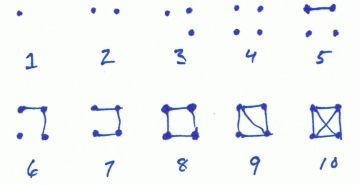We sometimes speak of data as if data could talk. For example, we say such things as “What do the data say?” and “Let the data speak for themselves.” It turns out there’s a way to take this figure of speech seriously: Evidence can be meaningfully measured in decibels.
In acoustics, the intensity of a sound in decibels is given by
10 log10(P1/P0)
where P1 is the power of the sound and P0 is a reference value, the power in a sound at the threshold of human hearing.
In Bayesian statistics, the level of evidence in favor of a hypothesis H1 compared to a null hypothesis H0 can be measured in the same way as sound intensity if we take P0 and P1 to be the posterior probabilities of hypotheses H0 and H1 respectively.
Measuring statistical evidence in decibels provides a visceral interpretation. Psychologists have found that human perception of stimulus intensity in general is logarithmic. And while natural logarithms are more mathematically convenient, logarithms base 10 are easier to interpret.
A 50-50 toss-up corresponds to 0 dB of evidence. Belief corresponds to positive decibels, disbelief to negative decibels. If an experiment shows H1 to be 100 times more likely than H0 then the experiment increased the evidence in favor of H1 by 20 dB.
A normal conversation is about 60 acoustic dB. Sixty dB of evidence corresponds to million to one odds. A train whistle at 500 feet produces 90 acoustic dB. Ninety dB of evidence corresponds to billion to one odds, data speaking loudly indeed.
To read more about evidence in decibels, see Chapter 4 of Probability Theory: The Logic of Science.

